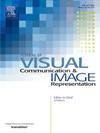Generalization enhancement strategy based on ensemble learning for open domain image manipulation detection
IF 2.6
4区 计算机科学
Q2 COMPUTER SCIENCE, INFORMATION SYSTEMS
Journal of Visual Communication and Image Representation
Pub Date : 2025-01-31
DOI:10.1016/j.jvcir.2025.104396
引用次数: 0
Abstract
Image manipulation detection methods play a pivotal role in safeguarding digital image authenticity and integrity by identifying and locating manipulations. Existing image manipulation detection methods suffer from limited generalization, as it is difficult for existing training datasets to cover different manipulation modalities in the open domain. In this paper, we propose a Generalization Enhancement Strategy (GES) based on data augmentation and ensemble learning. Specifically, the GES consists of two modules, namely an Additive Image Manipulation Data Augmentation(AIM-DA) module and a Mask Confidence Estimate based Ensemble Learning (MCE-EL) module. In order to take full advantage of the limited number of real and manipulated images, the AIM-DA module enriches the diversity of the data by generating manipulated traces accumulatively with different kinds of manipulation methods. The MCE-EL module is designed to improve the accuracy of detection in the open domain, which is based on computing and integrating the evaluation of the confidence level of the output masks from different image manipulation detection models. Our proposed GES can be adapted to existing popular image manipulation detection methods. Extensive subjective and objective experimental results show that the detection F1 score can be improved by up to 34.9%, and the localization F1 score can be improved by up to 11.7%, which validates the effectiveness of our method.
基于集成学习的开放域图像处理检测泛化增强策略
图像篡改检测方法通过识别和定位篡改行为,在保障数字图像的真实性和完整性方面发挥着关键作用。现有的图像处理检测方法泛化程度有限,因为现有的训练数据集难以覆盖开放域中不同的处理方式。本文提出了一种基于数据增强和集成学习的泛化增强策略。具体来说,GES由两个模块组成,即加法图像处理数据增强(AIM-DA)模块和基于掩模置信度估计的集成学习(MCE-EL)模块。为了充分利用真实图像和被处理图像数量有限的优势,AIM-DA模块采用不同的处理方法累积生成被处理轨迹,丰富了数据的多样性。MCE-EL模块是基于对不同图像处理检测模型输出掩模置信度的计算和综合评估,提高开放域检测精度而设计的。我们提出的GES可以适应现有流行的图像处理检测方法。广泛的主客观实验结果表明,检测F1分数可提高34.9%,定位F1分数可提高11.7%,验证了该方法的有效性。
本文章由计算机程序翻译,如有差异,请以英文原文为准。
求助全文
约1分钟内获得全文
求助全文
来源期刊

Journal of Visual Communication and Image Representation
工程技术-计算机:软件工程
CiteScore
5.40
自引率
11.50%
发文量
188
审稿时长
9.9 months
期刊介绍:
The Journal of Visual Communication and Image Representation publishes papers on state-of-the-art visual communication and image representation, with emphasis on novel technologies and theoretical work in this multidisciplinary area of pure and applied research. The field of visual communication and image representation is considered in its broadest sense and covers both digital and analog aspects as well as processing and communication in biological visual systems.
 求助内容:
求助内容: 应助结果提醒方式:
应助结果提醒方式:


